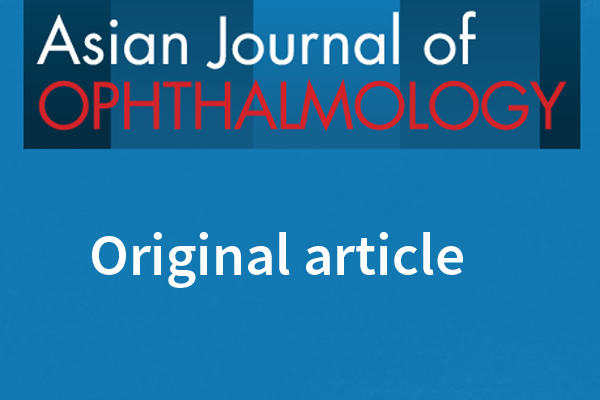Profile of fungal keratitis in a Sub-Himalayan territory of north India
Abstract
Aim: To study the microbiological and epidemiological profile of patients with suppurative corneal ulcer presenting in a rural referral center situated in a Sub-Himalayan territory of north India. The study was conducted to evaluate the epidemiology and frequency of mycotic keratitis among the patients of suppurative corneal ulcer and to identify various fungal species as etiological agents.
Methods: Corneal scrapings from 56 patients of suppurative corneal ulcers were subjected to direct microscopy and culture.
Results: Of the 56 cases of suppurative corneal ulcer investigated, fungal etiology was identified in 18 (32%) cases. Most of the patients (82.1%) worked in agriculture. Trivial trauma with vegetative matter was the most common predisposing factor. Fusarium and Acremonium species were the most common fungi isolated, followed by Aspergillus. Four cases of rare mycotic keratitis caused by Paecilomyces lilacinus, Scedosporium apiospermum, Monilia sitophila, and Ulocladium species were detected. Four cases were smear positive (10% KOH wet mount) but culture negative. Analysis of KOH wet mount was done using culture as gold standard. The sensitivity and specificity of KOH wet mount was 71.43% and 90.48%, respectively.
Conclusion: Direct microscopy and culture has a greater diagnostic value in the management of suppurative corneal ulcer. The authors have observed changes in the pattern of organisms identified as cause of fungal keratitis in the region. Rare species of fungi may also be detected if corneal scrapings are collected for direct microscopy and culture from all the cases of suppurative corneal ulcers greater than 2 mm.
References
Saha R, Das S. Microbiological profile of infectious keratitis from Delhi. Indian J Med Res. 2006;123(2):159-164.
Chander J, Chakrabarti A, Sharma A, Saini JS. Mycotic keratitis: A five-year study from Chandigarh. Indian J Med Microbiol.1993;11:218-222.
Tuft SJ. Editorial: Suppurative keratitis. Br J Ophthalmol. 2003;87(2):127.
Mahapatra S, Sahu DK, Das G, Bhuyan DN, Behera S, Behera SK. Epidemiological and microbiological evaluation of microbial keratitis in Western Orissa; A two-year prospective study in a tertiary care centre. AIOS, 2009 Proceedings:304-306.
Tewari A, Sood N, Mahenrda M, Mehta D. Epidemiological and microbiological profile of infective keratitis in Ahmadabad. Indian J Ophthalmol. 2012;60(4):267-272.
Sharma S, Taneja M, Gupta R, et al. Comparison of clinical and microbiological profile in smear positive and smear negative cases of suspected microbial keratitis. Indian J Ophthalmol. 2007;50(1):21-25.
Haddad RS, EI-Mollayess GM, Combination of intracameral and intrastromal voriconazole in the treatment of recalcitrant Acremonium fungal keratitis. Middle East Afr J Ophthalmol. 2012;19(2):265-268.
Guto JA, Bii CC, Denning DW. Estimated burden of fungal infections in Kenya. J Infect Dev Ctries. 2016;10(8):777-784.
Song X, Xie L, Tan X, Wang Z, Yang Y, Yuan Y, et al. (2014) A Multi-Center, Cross-Sectional Study on the Burden of Infectious Keratitis in China. PLoS ONE 9(12): e113843. https://doi.org/10.1371/journal.pone.0113843
Tewari A, Sood N, Mahenrda M, Mehta D. Epidemiological and microbiological profile of infective keratitis in Ahmadabad. Indian J Ophthalmol. 2012;60(4):267-272.
Qiu S, Zhao GQ, Lin J, et al. Natamycin in the treatment of fungal keratitis: a systematic review and Meta-analysis. Int J Ophthalmol. 2015;8(3):597-602.
Gupta N, Tandan R. Investigative modalities in infectious keratitis. Indian J Ophthalmol. 2008;56(3):209-213.
Taylor PR, Lean Jr.SM, Sun Y, Pearlman E. Aspergillus and Fusarium corneal infections are regulated by Th17 cells and IL-17 producing neutrophils. J Immunol. 2014;192(7):3319-3327.
Barathi MJ, Ramakrishnan R, Minakshi R, Mittal S, Shivkumar C. Srinivasan M. Microbiological diagnosis of infective keratitis: a comparative evaluation of direct microscopy and culture results. Br J Ophthalmol. 2006;90(10):1271-1276.
Titiyal JS, Negi S, Anand A, Tandon R, Sharma N, Vajpayee RB. Risk factors for perforation in microbial corneal ulcers in north India. Br J Ophthalmol. 2006;90(6):686-689.
Srinivasan M, Gonzales CA, George C, et al. Epidemiology and etiological diagnosis of corneal ulceration in Madurai, south India. Br J Ophthalmol. 1997;81(11):965-971.
Ong HS, Fung SSM, Macleod D, Dart JKG, Tuft SJ, Burton MJ. Altered patterns of fungal keratitis at a London ophthalmic referral hospital: An eight-year retrospective observational study. Am J Ophthalmol. 2016;168: 227-236.
Ansari Z, Miller D, Galor A. Current thoughts in fungal keratitis: diagnosis and treatment. Curr Fungal Infect Rep. 2013;7(3):209-218.
Rajaram R, Bhat P, Vaidee V, et al. Topical 5% Natamycin with oral ketoconazole in filamentous fungal keratitis: A randomized controlled trial. Asia Pac J Ophthalmol. 2015;4(3):146-150.
Al-Mujaini A, Al-Kharusi N, Thakral A, Wali UK. Bacterial keratitis: perspective on epidemiology, clinico-pathogenesis, diagnosis and treatment. Sultan Qaboos Univ Med J. 2009;9(2):184-95. Epub 2009 Jun 30. PMID: 21509299; PMCID: PMC3074777.
Tahereh S, Kiumars ND, Tahmineh MH. Fungal keratitis in patients with corneal ulcer in Sari, Northern Iran. Arch Iran Med. 2006;9(3):222-227.

Copyright (c) 2021 Anil Kumar Verma, Anuradha Sood, Anil Chauhan, Rajeev Tuli, Subhash Chand Jaryal

This work is licensed under a Creative Commons Attribution 4.0 International License.
Authors who publish with this journal agree to the following terms:
- Authors retain copyright and grant the journal right of first publication, with the work twelve (12) months after publication simultaneously licensed under a Creative Commons Attribution License that allows others to share the work with an acknowledgement of the work's authorship and initial publication in this journal.
- Authors are able to enter into separate, additional contractual arrangements for the non-exclusive distribution of the journal's published version of the work (e.g., post it to an institutional repository or publish it in a book), with an acknowledgement of its initial publication in this journal.
- Authors are permitted and encouraged to post their work online (e.g., in institutional repositories or on their website) prior to and during the submission process, as it can lead to productive exchanges, as well as earlier and greater citation of published work (See The Effect of Open Access).


